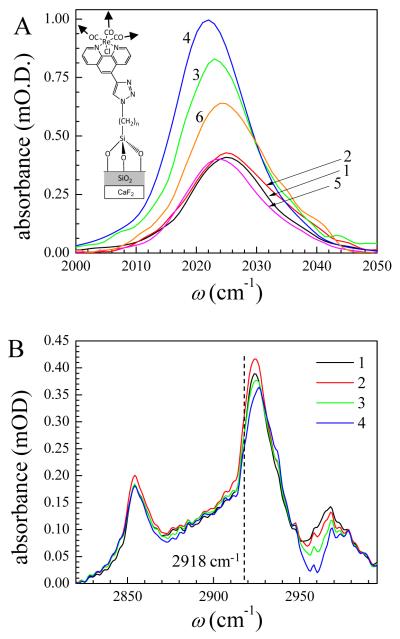Figure 2.
(A) Symmetric stretching region of the carbonyl modes of the immobilized RePhen(CO)3Cl on SiO2-on-CaF2 substrates. Sample numbers are as in Table 1. Increasing integrated peak area is due to increased Re metal complex surface density. The figure demonstrates that a significant variation in surface density is achieved through changes in the azide surface density and also variation in total immobilization process yield, as discussed in the text. (B) CH stretching region of the 11-bromo-undecyl-trichlorosilane monolayers formed as precursors for Re metal complex cycloaddition on monolayers #1-4. The layers are measured directly after deposition to prevent alkane contamination. The peak shapes and heights are comparable and the peak heights for the CH2 antisymmetric stretch (~2925 cm−1) are within ±7% of the peak height for monolayer #1, indicating there is not a significant difference in alkane monolayer surface density for the synthesized monolayers. The shift to higher frequency of the CH2 antisymmetric stretch from the all-trans value (2918 cm−1; dashed vertical line) indicates the presence of gauche defects and disorder in the monolayer.

